The clearing out of asylums was supposed to provide hope. Instead it spawned an underclass
The severely mentally ill were promised a better future after asylums were mothballed. The promises were hollow.
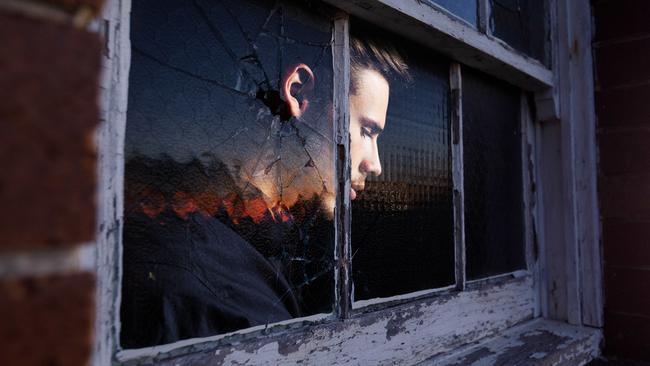
The sloping manicured lawns and crumbling sandstone blocks of Rozelle Hospital in Sydney’s inner west are suspended in time. Surrounded by metal fences dotted with signs warning of asbestos and hazardous materials, the buildings’ windows boarded, the site is a perfect metaphor for the state of suspended animation that characterises Australia’s policy torpor on the care of those living with severe mental illness.
Rozelle Hospital – previously known as Callan Park Hospital for the Insane – was one of the largest and oldest mental asylums in the nation before the movement of deinstitutionalisation permanently mothballed such facilities.
It was a place of contrasts: serene gardens and waterside views, security and succour for patients; world-class training for young psychiatrists yet cruel and inhumane Victorian-era restrictive practices, isolation and denial of autonomy for patients.
Although the shift to care in the community that began in Australia in the 1950s and was cemented as national policy following the landmark 1993 report of the nation’s first human rights commissioner, Brian Burdekin, was firmly based on strong evidence that such practice was superior to hospital-centred care for most people with acute and long-term mental illnesses, governments never kept their end of the bargain as those with intractable conditions were released from asylums to an uncertain fate.
Importantly, human rights were secured – but, clinically, money never followed the patients into the community. Chronic underfunding, discriminatory resourcing and sheer neglect continuing across decades have not only relegated some patients to lives of abject disadvantage, they also have left Australia’s health system and beyond with big problems.
“A proportion of the severe patients that we would have treated here successfully have ended up in prison,” says Sydney psychiatrist Gary Galambos, who has returned with Inquirer to the grounds of Rozelle Hospital where he trained and worked in the early 1990s.
“The prisons have become full of patients with chronic mental illness, some of them are struggling with substance use, when maybe that would have not necessarily been the outcome. They’re dying young, dying prematurely, being cared for by exhausted families who are struggling.
“It’s a totally unjust and unnecessary state of affairs. I think that we should be doing better, we could have been doing better. We have resources for people with cancer, with other sorts of diseases. Yet this group has been neglected. The demand is very high, and it’s the severe patients with severe conditions and treatment-resistant conditions that have suffered the most. They’re the ones who have not had their needs met.”
This week The Australian’s special series Cast Adrift has highlighted the fact those with severe mental illness die on average 17 years before the average Australian. Those with schizophrenia are up to 30 times likelier to attempt suicide or self-harm.
“At this point in time, there’s a sense of deep demoralisation among most of my colleagues, where they feel that the battle’s kind of lost,” Galambos says. “There’s been a huge mutiny of my colleagues out of the system, people who were passionate about the public sector.
“They feel that the system is like a conveyer belt and they’re being treated like technicians.”
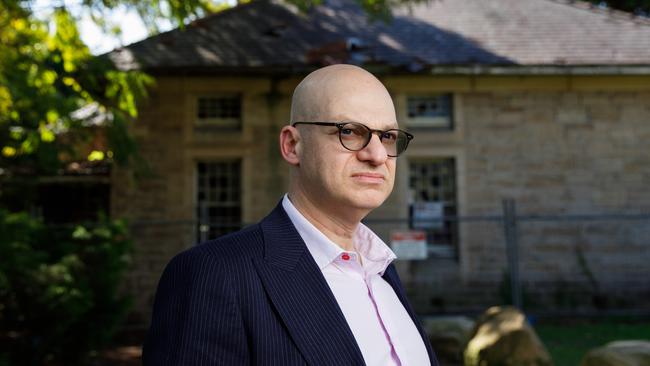
Those at the frontline of community care also are buckling under the stress, and they experience daily devastation at their inability to meet demand or provide any semblance of care for patients.
Their work has been reduced largely to medication management and policing of community treatment orders, with many teams having access to a psychiatrist only one day a week, and minimal psychology and therapy opportunities offered to consumers.
Yet if supported housing with health and social care wrapped around patients were invested in, the need for inpatient beds would be slashed radically and tens of thousands of lives placed on a positive trajectory.
“I have never seen the system more broken,” says a mental health clinical nurse specialist who wants to be known only as Nina.
“The care has gone from healthcare. We are grossly under-resourced. The rate of burnout is phenomenal. Not a day goes by when I don’t hear a colleague say: ‘I feel like I’m drowning.’ ”
For Nina, the broken nature of the mental health system came to bear upon her personally when her son began to abuse drugs and experienced paranoia and delusions in his late teens. He was later diagnosed with schizophrenia. All of her clinical experience counted for nothing as she attempted to navigate a fragmented and dysfunctional system.
“I couldn’t get him any real support from our GP, his school, headspace, community mental health or even the local youth drug and alcohol service,” she says.
“The hopelessness I felt as a mental health nurse who couldn’t even get my own son support was gut-wrenching.
“I’d take him to ED and was told I could manage him at home.”
Nina’s son was a gifted and talented student with aspirations to study engineering at university before his descent into psychotic illness. He was in a state of acute fear in early 2020 as the symptoms he tried to ignore for months became impossible to quell.
“He said to me ‘Mum, I’m scared, I can’t stop hearing these voices,’ ” Nina says. “He wanted help, but I think he was terrified. I think he was absolutely terrified.”
Several emergency department visits with interminable waits inevitably resulted in cursory checks and instructions to return home. On occasion, despite clear indications that her son needed inpatient care, the nurse was told frankly that managing on her own would be preferable to a mental health ward admission.
“More than once clinicians turned around and said to me: ‘You can manage this, can’t you? He’s better with you than coming into hospital, you know, you wouldn’t want any of your loved ones in here.’ And it was like, well, he’s literally telling me he’s homicidal and about to jump off my balcony, and I’m watching my son bang his head against the bathroom mirror because he can’t get the voices out of his head. He’s slapping his own face to stop the voices.
“It’s like, no, no, I can’t keep handling this. But you know, people know the system’s broken.
“I could see my son unravelling, the whole system could see him unravelling. But up until his eventual admission to hospital, the healthcare my son received was almost non-existent.
“It’s that phase of deterioration, that real acute clinical deterioration, where you can intervene with assertive support, that people aren’t getting. Between that and somebody losing all capacity in regards to their mental health treatment decisions, there’s no in between.”
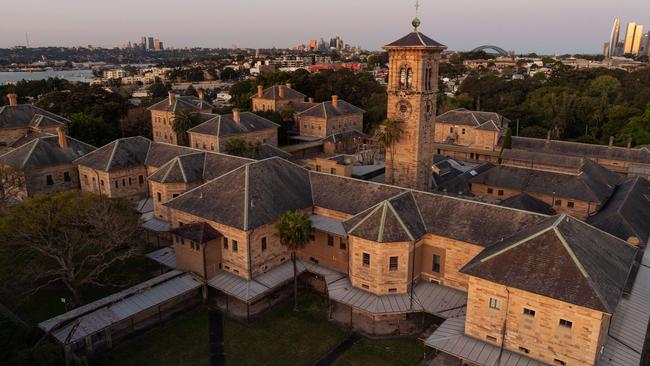
This phenomenon, often dubbed the “missing middle” – meaning the health system cares effectively for those with low-acuity mental health problems and responds to crisis but provides little care to those with moderate to severe chronic conditions – has been documented in too many inquiries to count during the past two decades.
Yet, as also recorded in hundreds of inquiries during the past 30 years, the nation’s mental health system remains blighted by poor planning, ineffective and unevaluated interventions, and underfunding and under-resourcing by all governments proportionate to need.
“This is all in the face of one of the biggest health challenges facing the nation in the 21st century – mental healthcare,” an Australian Medical Association submission to a recent government inquiry states.
“At a time when demand for quality mental health services is at its highest, our national commitment to the mental health sector is frighteningly inadequate and fragmented.”
Australia spent $12.2bn in 2021-22 on mental health. The average annual increase in funding was 2 per cent in real terms since 2017-18. This lags well behind the increase in overall health spending as well as sharp increases in demand as the number of Australians reporting suffering mental health conditions grows.
Under John Howard’s reign there was a significant boost to mental health; since then the cause has withered on the vine.
Although governments claim they spent more year on year, the federal spend on mental health as a proportion of the overall health budget has been declining and now has slipped woefully to below 7 per cent.
One in five Australians experienced a mental health disorder during the past 12 months; close to 50 per cent will experience mental ill-health in their lifetime. Severe mental illness affects about 600,000, and an estimated 60,000 have enduring and disabling symptoms with complex and multi-agency service needs.
In contrast, about one in 50 people at any time in Australia is suffering cancer, and spending on that condition is well above expenditure on mental health at $14.5bn a year. Huge portions of the taxpayer research funding pie is dedicated to cancer; very little indeed to mental health.
According to Burdekin, writing 20 years after his 1993 report, the severely mentally ill have been “routinely ignored, politically disempowered, ostracised, marginalised and even victimised for centuries”. He does not believe much has changed.
Indeed, the life expectancy gap between those with schizophrenia and the rest of the population remains stuck in 2024 at the same level as it was 100 years ago – a shocking 65 years compared with a national average life expectancy of 83 years.
“Essentially the story is the same, that we have gone nowhere on these things,” says John Mendoza, a past chairman of the National Advisory Council on Mental Health and former chief executive of the Mental Health Council of Australia.
“We’ve documented these failures for decades. We continue to fail. To have the same life expectancy gap that we had in the 1920s, to have the imprisonment rates that we have, it is just dreadful.
“When we get these tremendous gaps in life expectancy and health outcomes, and you’ve got to put it down to there is an in-built bias and prejudice in the healthcare system, which is not ensuring that people living with mental illness are treated with respect, with dignity, and with the same rights as other people.”
A system driven by crisis affects patient care and staff morale. It’s not only a matter of overcrowding and the churn of patients who are discharged prematurely amid heavy demand for beds.
As the testimony of 29-year-old Billie in The Weekend Australian last week so devastatingly demonstrated, patients in mental health wards often are deeply traumatised by their experiences and left with a lifelong lack of trust in health services.
Billie, who is living with schizophrenia and had spent about 1000 days in youth public hospital psychiatric wards before she turned 18, described at times experiencing compassion and care.
But more often than not, her experience as an inpatient was characterised by fear and degrading treatment. There was seclusion sometimes lasting as long as 24 hours, periods in which she was considered too risky to walk out of her room to go to the toilet and so was handed a silver steel bowl; times when the hospital deemed she could never be alone, not even to change a tampon.
Male security guards were often more numerous than nurses; every day in mental health wards patients are sedated against their will with sometimes inordinately large doses of sedating drugs; security guards manhandle young women who pose little threat. Adolescents are housed in adult wards. Women are routinely sexually assaulted in mental health units. One wonders, if a Burdekin-style inquiry into mental health wards in Australia were held today whether the abuses uncovered might rival what was documented in the 1993 report on the nation’s asylums.
Certainly the situation is so bad that many staff no longer will work in the public system, and even the private system is now struggling to staff wards.
“I call it moral injury, psychiatry,” says Angelo Virgona, elected director on the board of the Royal Australian and New Zealand College of Psychiatrists.
“This is the environment we operate in this country. You know, we’re all crying here. If you’re in cancer care, you know exactly what’s going to happen. If I’m an oncologist I feel like I can feel safe in the knowledge that I’m delivering the evidence-based care to all my patients every single day.
“But no psychiatrists, very few psychiatrists in Australia, I think, would be able to say the same thing.”
Psychiatrist Olav Nielssen, who volunteers at the clinic at the Matthew Talbot Hostel in Woolloomooloo in central Sydney once a week and has successfully raised funds to open a facility called Habilis, made up of supported assisted private apartment accommodation in Sydney’s inner west, is deeply frustrated that demonstrated solutions such as providing secure housing have never been seriously attempted at scale in Australia.
“Continuous and long-term care for a patient is impossible unless you’ve got a fixed abode,” Nielssen says.
“It’s just so costly and wasteful to not look after people a little better. And that’s just the economic argument. The moral argument is that for one of the world’s richest societies in history, the river of money that’s flowed through Australia has not flowed to just a little bit of care for the most disadvantaged.
“Australia has got the world’s best health system, but the way I can argue that is our longevity. The people who are let down by the health system are the people who can’t look after themselves. In terms of mental health, it’s the most severely mentally ill that are under-cared for. We’ve got very diffuse funding across the federation, and there is a lot of middle-class welfare in our mental health system, with commonwealth funding largely going to low-acuity care.
“From my perspective the key ingredient that’s missing is the ingredient that was recommended by the NSW Richmond report in 1982, which is supported accommodation, because we’ve got 1600 acute beds in NSW and probably a good number of those, in the order of a third, are occupied by people who could be cared for outside hospital.
“And that completely blocks the system and creates huge stress at the front end because a lot of people are being turned away who probably could be admitted and cared for a bit better.
“People with severe mental illness are a relatively small and finite group, and it’s not actually costly at all. That’s the absurdity of it. The cost of providing accommodation and day staff in a home is actually quite small. I mean, for example, the budget in Italy is about $20,000 to $30,000 per annum, per bed.”
But even for non-government organisation-provided temporary accommodation such as at Matthew Talbot, support has shrunk dramatically. Thirty years ago across the four hostels in inner Sydney, there were about 1200 shelter beds in Sydney; now there are fewer than 300.
Massive rooms that once housed dormitory beds lie abandoned, only the metal dividers that separated beds remaining.
It’s partly a matter of safety protocols amid rising substance abuse and the violence that can attend it. All of the beds in the hostel are now contained in single rooms with locked doors.
The prevalence of cheap drugs such as ice, a significant cause of psychosis, is another complicating factor that has piled pressure on the system, which is ill-equipped to cope. There is virtually a complete separation between substance abuse health services and mental health services.
In the park underneath the train line overpass that cuts through Woolloomooloo just down the lane from Matthew Talbot, those who cannot get beds in the hostel sleep out in the open. They trek down the lane to get a hot meal inside and often obtain healthcare at the clinic. Others sleeping rough – many with complex mental health conditions – routinely miss out on any healthcare.
“Just the health costs alone of the people who attend the clinics in the inner city is absolutely staggering,” Nielssen says.
“It’s something like $100,000 per annum in unnecessary health costs. And despite the system spending literally hundreds of millions of dollars in hospital care alone, the health outcomes are terrible. Patients are very poorly treated. There’s no continuity of care. There’s premature mortality. It’s just an absurd waste.”
These days the work of community care teams nationwide has boiled down to little more than policing those on Community Treatment Orders, which require the individuals subject to them to take medication on schedule.
In the most remote corners of the nation, such as central Australia, mental healthcare amounts to a plane landing on an isolated airstrip once a month and administering mass injections – routinely to at least a quarter of the community – of the outdated antipsychotic medication known as depot. There is very little public or private psychiatric service available outside hospitals across the entire Northern Territory.
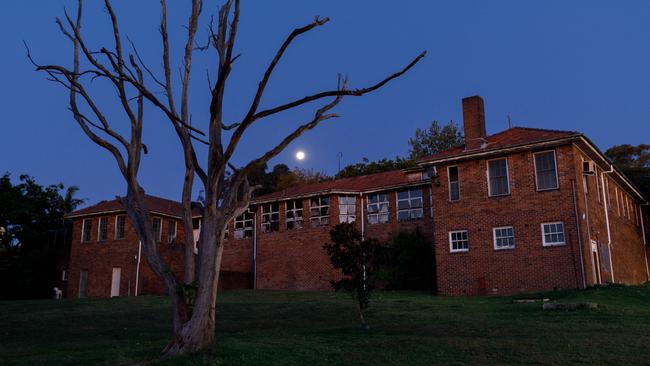
Insiders frankly describe the collapse of community mental healthcare.
A recent inquiry into mental health in NSW published a submission from registered nurse Kasia Thoms, who described the despair of staff amid threadbare resourcing.
“Consumers are being referred to community mental health teams for outpatient support, only to fall through gaps in the system as our service doesn’t have the capacity to support these people in need,” Thoms said.
“To work in mental health nursing is my passion and dream. Now, when reflecting on my role in a community mental health team, I cannot say I’m proud to work for my service. How can I be proud when my consumers cannot access a psychiatrist, cannot access sufficient supports from mental health clinicians due to lack of resources and cannot access psychology or therapies?”
The failure to provide care in the community means hospitals now are able to admit only those with the most acute mental ill-health.
“For many people referred to a public mental health service, you will find that they will just simply say no because your problems are not severe enough for them to consider you,” Virgona says.
“It’s extraordinary. Huge numbers of people fall through the cracks. These people just languish and it wouldn’t happen if you were having a heart attack, or if you had cancer, or if you had any other sort of chronic sort of medical disease with clear pathways to care clear responsibilities. In mental health, there’s no such thing.”
Amid such high acuity of patient load, healthcare is calibrated increasingly on perceived risk rather than the need for care. Mental health laws around the country dictate that decision-making over patient admission is determined based on whether individuals are a risk to themselves or others. A very unwell patient load means many psychiatrists are inclined to assess risk more and more conservatively.
“It’s not possible to have a recovery-based model if you’ve got a crisis-based model dominating because then you’re only interested in resolving the crisis, the acute crisis, risk management to reduce the risk,” says Galambos, who is now the medical director and one of the founding psychiatrists of Uspace, the youth and young adult mental health service at St Vincent’s Private Hospital in Sydney.
“Once the risk reduced, it’s someone else’s problem.
“Patients are either getting under treatment or over treatment. So the majority get turned away, but for those who do get treatment, people are getting treated without the care, the compassion, the expertise, both technical and emotional. They’re being given medications rather than being talked to, they’re being put in a room. They’re being kept in a corridor. They’re sitting for eight hours in a row of chairs waiting for someone to see them.
“What they’re getting is a very spartan approach. They’re getting mechanistic treatment. And so their experience is that they are like being objectified. They feel like a problem.
“We see a lot of people in here who’ve been through the public system. The majority of them come in and say: ‘Everything that’s been given to me hasn’t worked. I’m defective. I’m untreatable.’ It demoralises them. It gives them something called learned helplessness, which means you don’t even try to get help. It’s pretty heart-sinking when they say: ‘You’re my last hope because everything I’ve tried hasn’t worked.’
“What they don’t even know is that what they’ve tried is non-therapeutic. They think that it’s been therapeutic because it’s all that’s been offered to them. They’ve had no continuity of care. They’ve had fragmented care. No one’s got to know them. No one’s got to understand them. No one’s got to see the big picture. No one’s done a proper formulation.
“Those people have been neglected and marginalised, and it’s like a new dark era where people aren’t getting their needs met with the highest level of acuity.”
Nina’s son is doing quite well now, but she grieves the lost years. He never learned to drive a car, he lost jobs, his physical health deteriorated, and mother and son carry lasting scars from the failure of this most neglected aspect of Australia’s world-class health system. “The impact on my family goes beyond words,” Nina says.
“All of these losses could have been prevented with appropriate early intervention and appropriate community mental health support with a focus on preventing a deterioration in psychosocial functioning.
“Our family relationships could have been preserved. Thankfully my son has been symptom free now for some time, quit drug use almost a year ago, and is slowly rebuilding his life. But this experience for my son has been extremely traumatic and life-changing. For me it has at times felt humiliating, I have felt desperate and hopeless. I have so much resentment for a career which I used to love.”




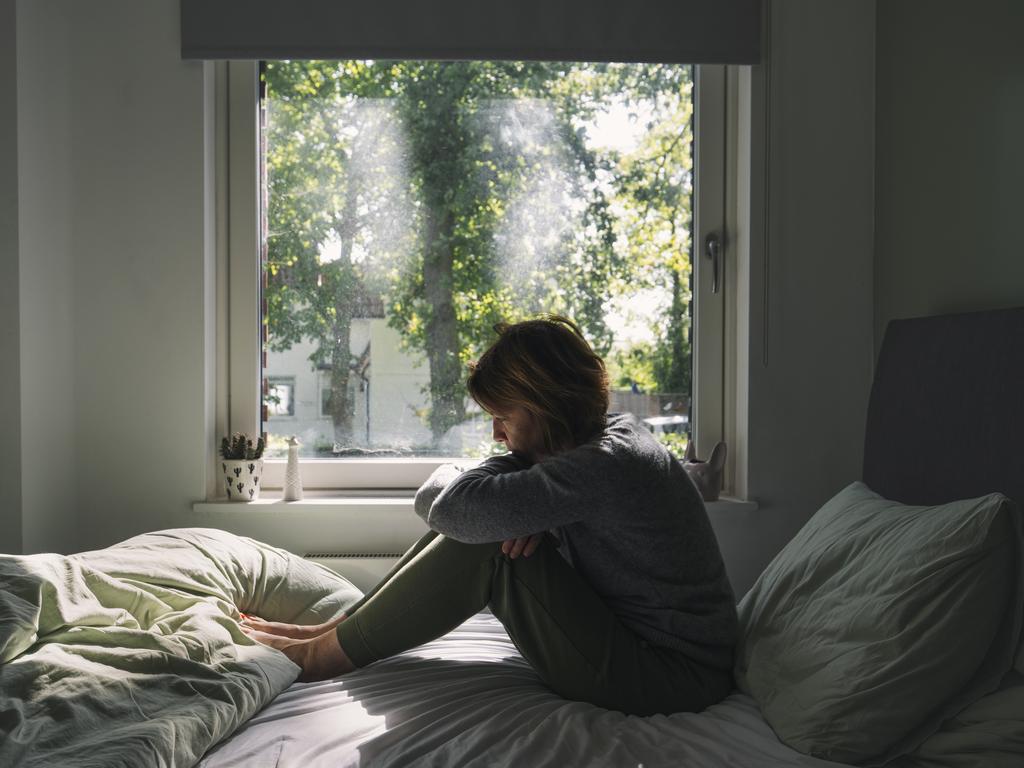


To join the conversation, please log in. Don't have an account? Register
Join the conversation, you are commenting as Logout